Ever wondered what makes professional organizers cringe when they walk into a home? While Pinterest might showcase perfectly arranged rainbow bookshelves, real organizing pros know what truly works—and what’s just for show.
Let’s peek behind the curtain at what drives organizers crazy and discover the practical alternatives they actually recommend for homes that stay neat without the fuss.
1. Miscellaneous Baskets Everywhere
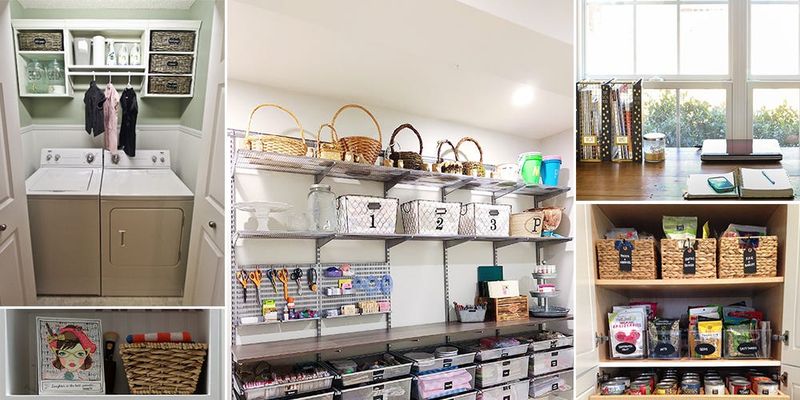
Dumping random items into cute baskets labeled “miscellaneous” creates instant organizing purgatory. Objects without proper homes become permanent residents in these catch-all containers, eventually overflowing and requiring archaeological excavation to find anything.
Professional organizers call these “decision avoidance bins” because they postpone the inevitable sorting that needs to happen. Worse still, most homes have five or six of these scattered around!
2. Rainbow-Organized Bookshelves
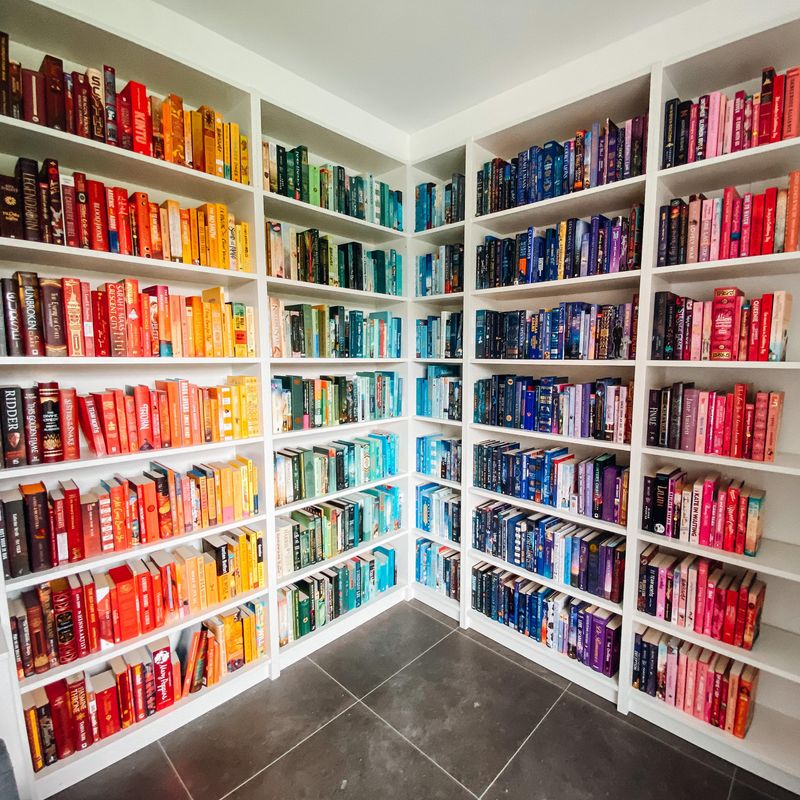
Arranging books by color creates a stunning visual but destroys actual functionality. Finding your favorite cookbook becomes a memory game when it’s filed under “green” instead of “cooking.”
Color-coding sacrifices speed and intuition for aesthetics. Many organizers report clients can’t find important books for weeks after implementing rainbow systems.
Pretty? Absolutely. Practical? About as useful as organizing your spice rack by jar height.
3. Decanting Everything Into Matching Containers
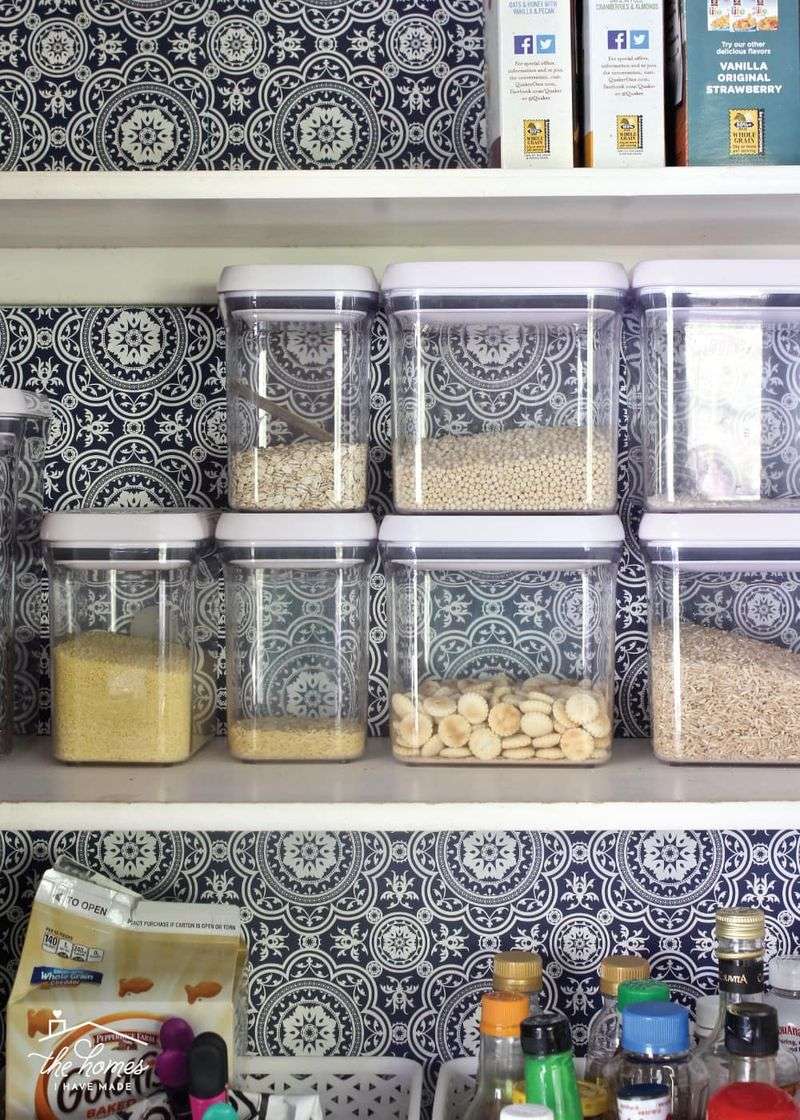
Transferring every pantry item into uniform containers wastes precious time. Nobody needs to decant individually wrapped granola bars or sealed crackers into yet another container.
Refilling becomes a chore many abandon within weeks. Empty containers collect dust while original packaging gets stuffed alongside them.
Maintaining a Pinterest-worthy pantry requires constant work that rarely justifies the payoff in actual time saved or improved function.
4. Cramming Drawers Full of Dividers
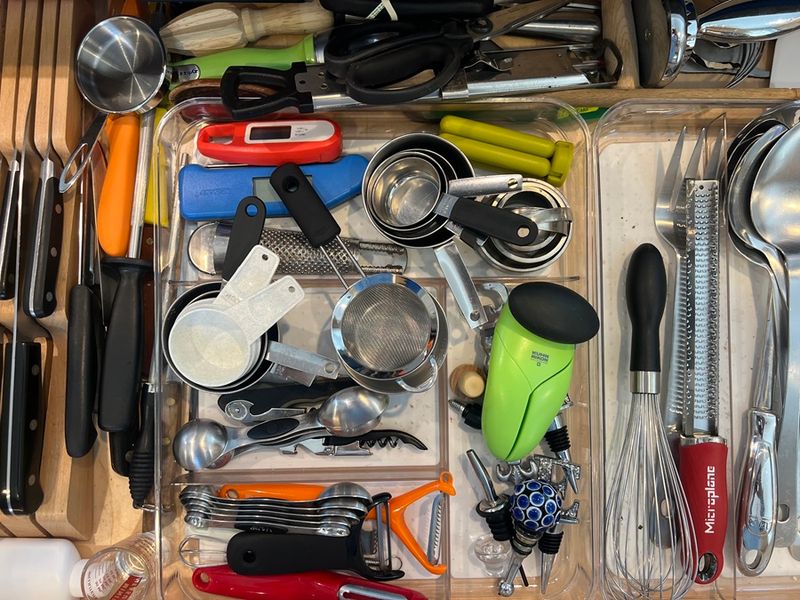
Stuffing drawer organizers into already overflowing spaces creates an illusion of control while solving nothing. Small plastic compartments quickly become mini junk drawers themselves when the real problem is simply owning too much stuff.
Drawers jam because dividers take up valuable space. Money wasted on fancy organizers could be better spent replacing worn-out items that actually deserve drawer real estate.
5. Labeling Absolutely Everything

Going label-crazy creates visual noise and unnecessary work. Labeling obvious items like “forks” in your silverware drawer or “toothbrush” in your bathroom cabinet insults everyone’s intelligence.
Labels peel, fade, and become outdated as needs change. Excessive labeling often masks deeper issues with organization systems.
When everything screams for attention through a label, nothing stands out—defeating the purpose entirely.
6. Hiding Clutter Behind Cabinet Doors
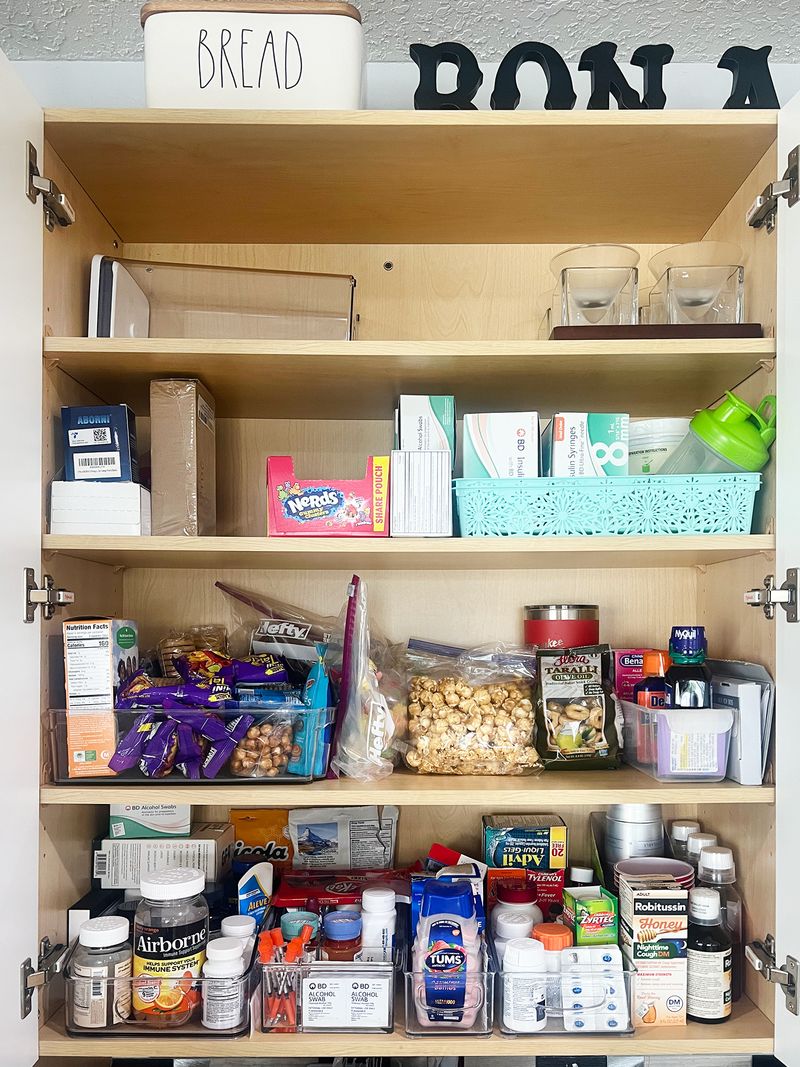
Shoving mess behind closed doors isn’t organizing—it’s postponing inevitable chaos. Cabinet stuffing leads to avalanches of plastic containers whenever you need something from the back.
Professional organizers regularly find expired medication, moldy food, and forgotten purchases in these hidden zones. Closed storage becomes a stress trigger rather than a solution.
Out of sight shouldn’t mean out of mind when it comes to belongings you actually need.
7. Dollar Store Bins That Buckle Under Weight
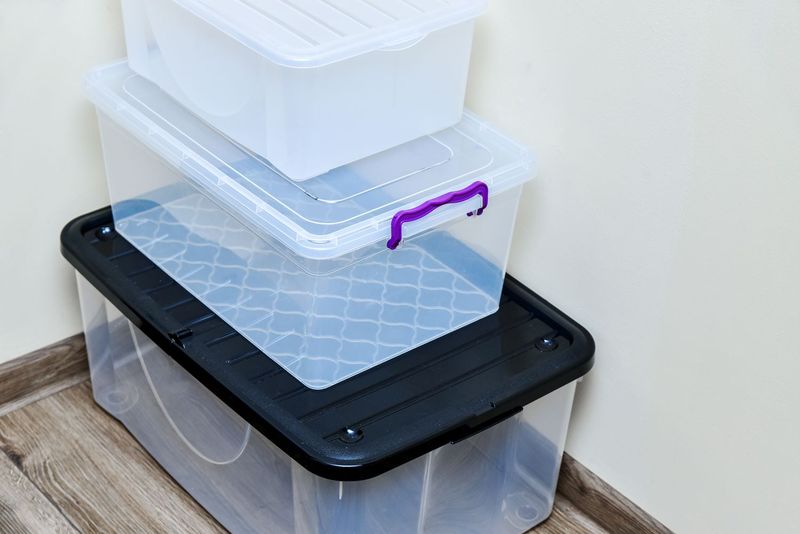
Flimsy plastic organizers crack under pressure—literally. Cheap bins warp when stacked, creating wobbly towers ready to collapse at the slightest touch.
Warped containers waste space because they no longer fit properly on shelves or in drawers. Broken hinges and cracked corners create sharp edges that scratch surfaces and fingers.
Replacing these budget bins actually costs more long-term than investing in sturdy solutions from the start.
8. Overly Complex Systems Nobody Maintains
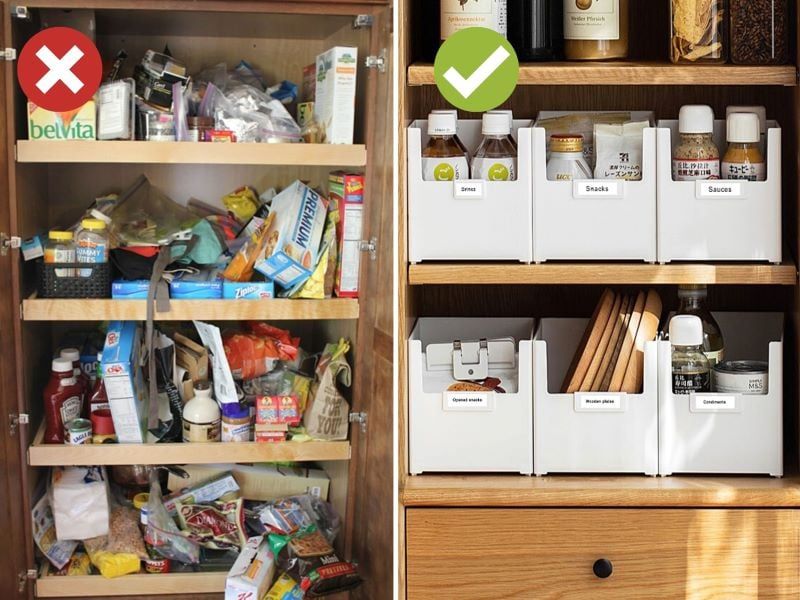
Creating elaborate organizing systems with multiple steps guarantees failure. Family members abandon complicated routines that require extensive sorting, folding, and specific placement protocols.
Perfectly labeled file folders sit empty while papers pile up nearby. Intricate garage zones with detailed placement maps become dumping grounds within days.
Complexity is the enemy of consistency—especially in busy households where maintenance time is limited.
9. Group By Function, Not Appearance
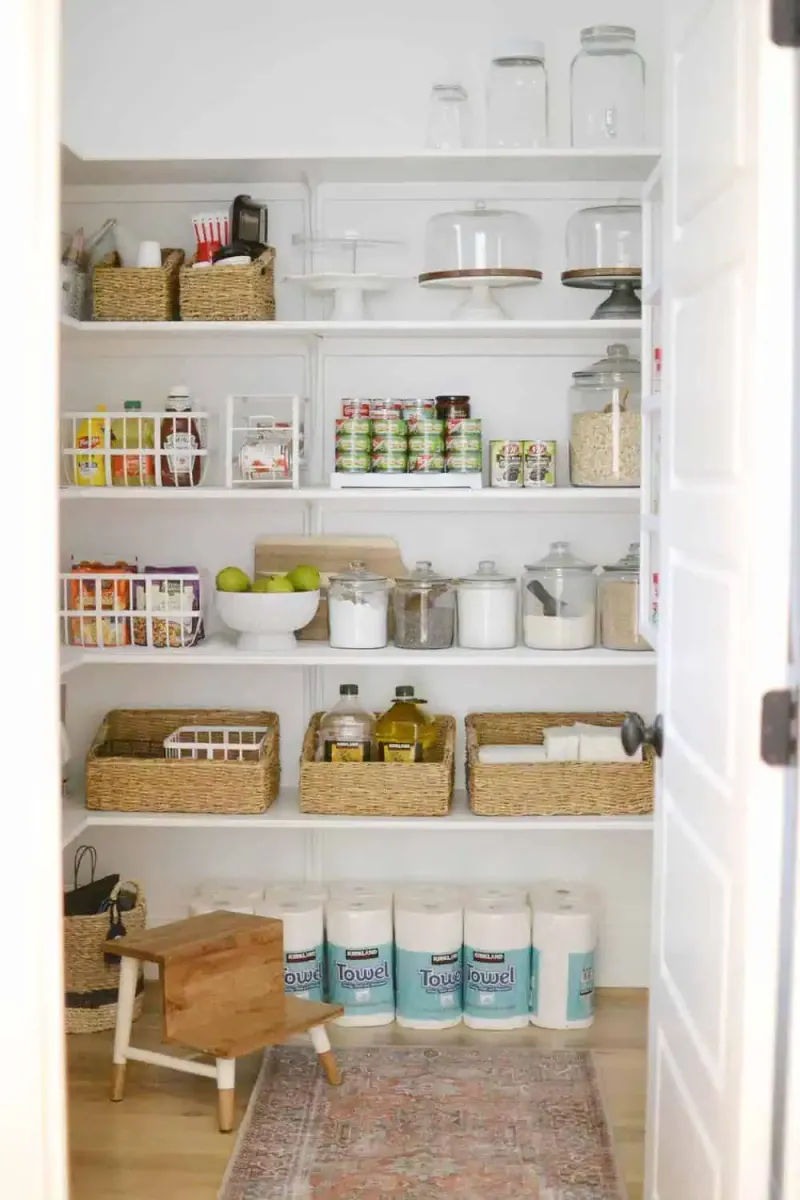
Store items where you actually use them instead of creating arbitrary categories. Kitchen tools used for baking belong together regardless of material or color—measuring cups, spatulas, and whisks should live near your mixing bowls.
Function-first organizing slashes time spent searching and increases the likelihood items return to their homes. Morning routines flow when everything needed for coffee sits together rather than scattered by material type.
10. Create Breathing Room On Shelves
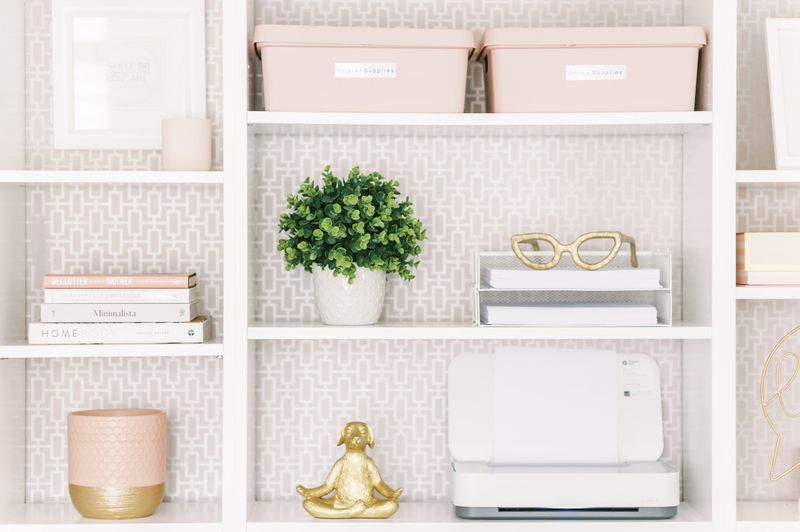
Leave 20% of each shelf empty to allow for growth and easy retrieval. Breathing room prevents the domino effect where removing one item causes others to fall.
Partially empty shelves make visual scanning faster—you’ll immediately spot what you need. Space between items allows for quick reorganizing when seasons or needs change.
Counterintuitively, less-packed shelves actually store more usable items because nothing gets lost or forgotten in the back.
11. Store Backstock Elsewhere
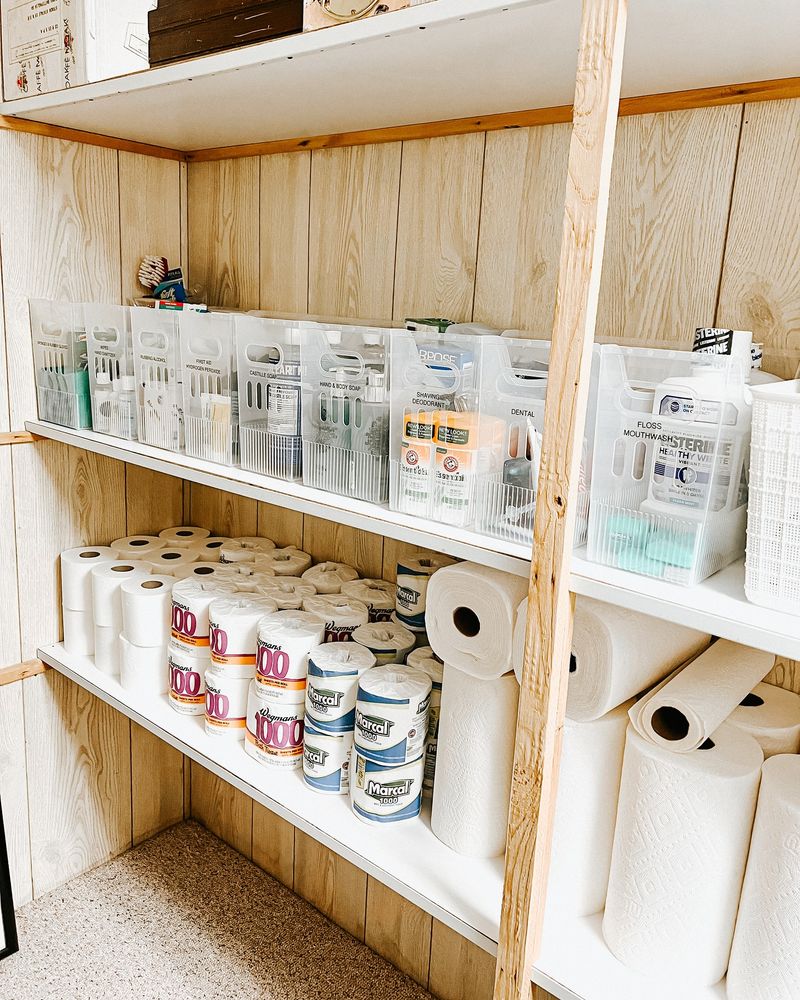
Keep only currently used items in prime locations. Extra paper towels don’t belong under the kitchen sink—they belong in a dedicated backup supply area.
Separate backstock from active inventory to instantly clarify what you actually have. Bathroom cabinets function better when limited to products in current rotation rather than six backup bottles of shampoo.
Bonus: designated backstock zones make shopping more efficient since you’ll always know what you have.
12. Use Uniform Containers Strategically

Invest in matching containers only for items frequently accessed together. Pantry staples like flour, sugar, and grains benefit from uniform containers that stack efficiently and seal properly.
Avoid container consistency where it doesn’t matter functionally. Office supplies work fine in repurposed boxes rather than expensive matching sets.
Quality matters more than coordination—choose durability for everyday items and save matching aesthetics for visible storage.
13. Create Drop Zones With Reset Times
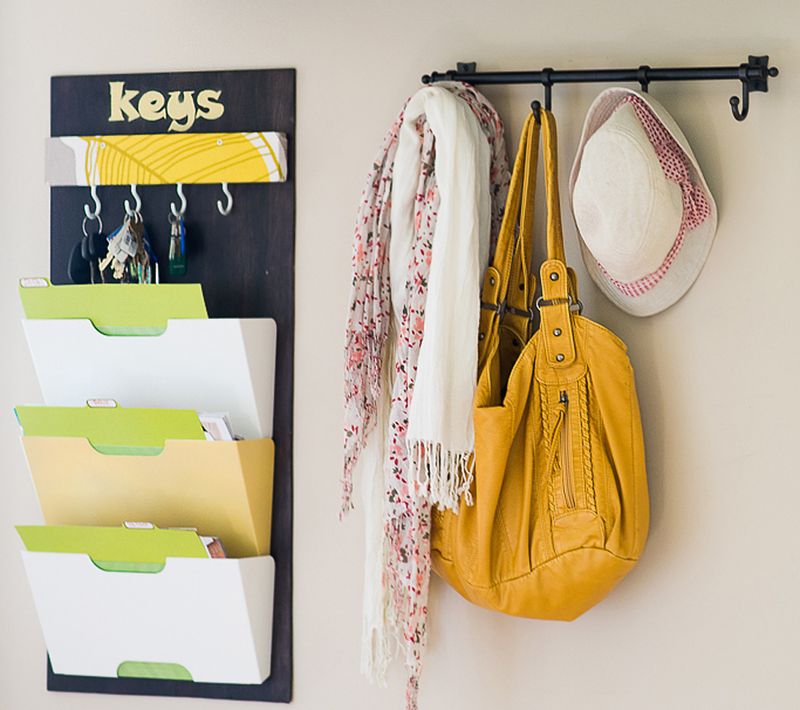
Designate specific spots for transitional items like mail, school papers, and everyday carry items. The key difference from miscellaneous baskets? Schedule regular reset times—perhaps Sunday evenings—when everything gets properly filed or discarded.
Drop zones acknowledge reality: perfect daily sorting rarely happens. Time-bounded collection points prevent permanent pileups while accommodating busy schedules.
14. Label Categories, Not Individual Items
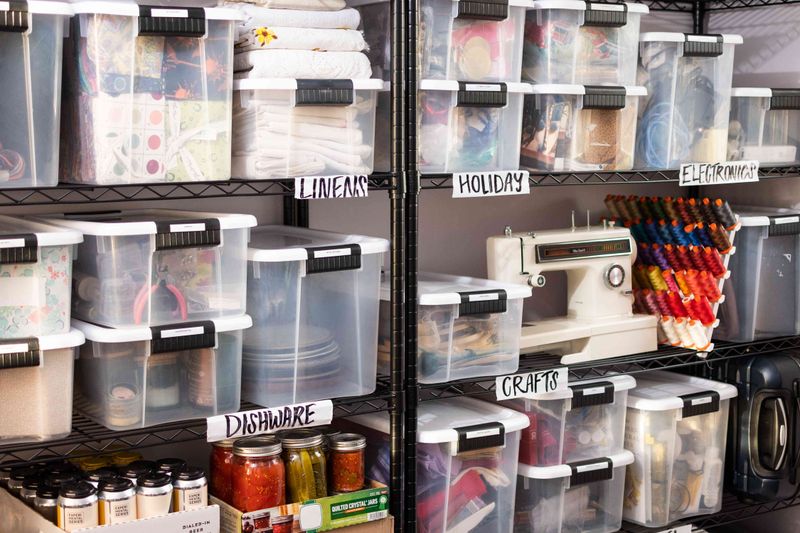
Reserve labels for broad categories rather than specific items. “Baking” works better than labeling each ingredient. “Winter Accessories” beats individual labels for each hat and glove.
Category labels allow flexible contents as needs change seasonally. Broad groupings adapt to real life without constant relabeling.
Minimal labeling looks cleaner visually while still providing necessary guidance for household members to maintain the system.
15. Choose Containers After Sorting
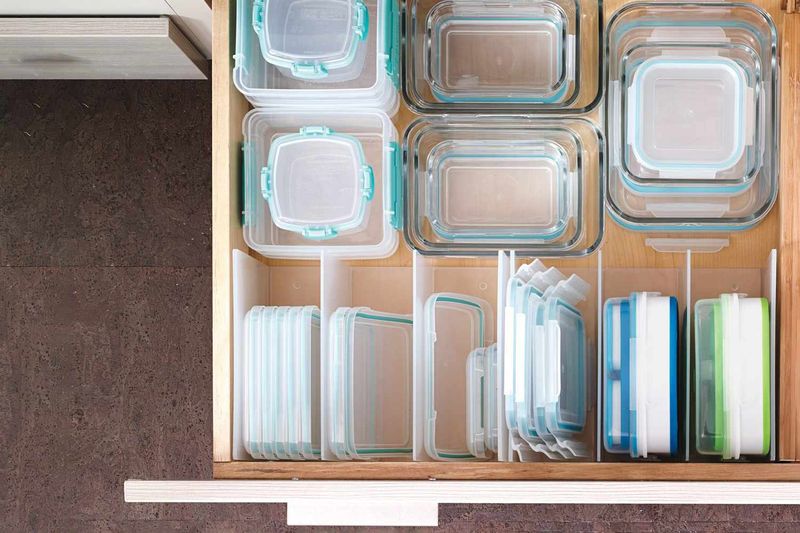
Complete a thorough edit before purchasing a single container. Measure spaces and group like items first to determine exactly what size and type of storage you actually need.
Pre-shopping leads to wasted money on bins that don’t fit either the items or the space. Professional organizers always sort, purge, and measure before recommending storage solutions.
Patience here saves both money and frustration.
16. Create Logical Zones Based On Habits

Organize according to your actual routines rather than conventional wisdom. If you always read in bed, keep books in the bedroom regardless of decorating rules saying otherwise.
Watch family patterns for two weeks before establishing storage locations. Notice where items naturally accumulate—that’s valuable data about how your household really functions.
Systems aligned with natural habits require minimal enforcement and maintain themselves with little effort.

